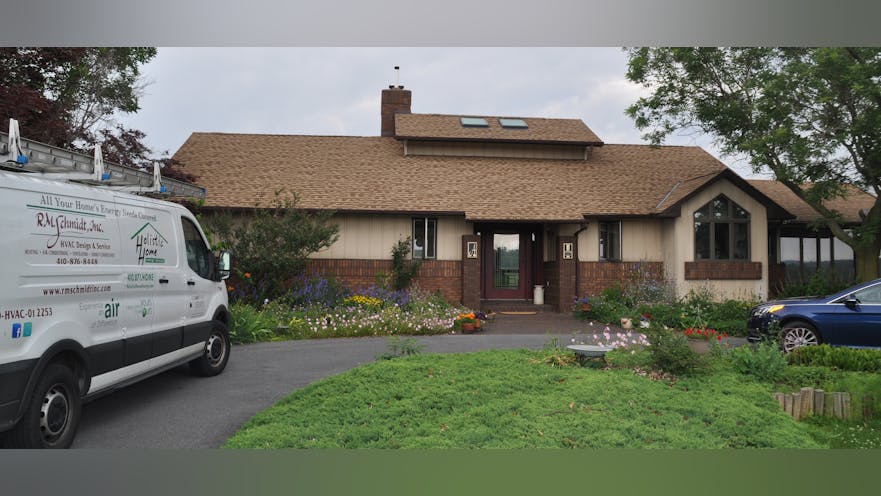A ContractingBusiness.com 2016 Quality Home Comfort Award goes to a contractor who is truly dedicated to helping homeowners conserve energy.
Sean Schmidt, president of Holistic Home Energy, Westminster, Md., is a Building Performance Institute (BPI) Certified Building Specialist and Certified Envelope Specialist.
Schmidt’s winning project began like so many others: with a phone call from someone seeking to save energy.
The Energy Audit Report included the following:
• utility usage and costs
• blower door testing
• insulation and air sealing
• energy drain by appliances
• window efficiency
• water heating
• the efficiency of the homes 14-year HVAC system.
This included design load assessment.
Design loads are instantaneous loads describing what is currently required from the mechanical systems to heat and cool the building, and what would be required if the recommended package of improvements was implemented. Design loads allow a contractor to determine whether the current systems are appropriately sized, and what an optimal system would be, given other efficiency improvements.
“After doing a blower door test along with an ACCA Manual J Heat/Cool Load evaluation, we determined that his equipment was undersized,” Schmidt reports.
“The only proper way to address this was to correctly weatherize his home, by bringing his insulation levels up to Energy Star Standards and Air Sealing the house as tight as we could get it. That brought the load down to where we needed them.
Duct leakage was another problem, at 30% leakage. Before he installed a recommended, Daikin DZ system, all ducts sealed from the inside by using the AeroSeal process.
After sealing up the building envelope and making sure the duct system was delivering at full capacity, Schmidt offered Mr. Arbaugh a 4-ton, Daikin DZ Series inverter heat pump to meet the unique load curve of his home, delivering the perfect capacity and cfm throughout the day, while offering peak efficiency and comfort.
“We topped the whole project off by adding an AirCycler Controlled Ventilation System,” Schmidt says. “Since we tightened his house up, we needed to deliver fresh air back into the house to meet ASHRAE 62.2 Standards, but also improve the overall IAQ of his home.”
Regarding the previously mentioned Design Loads, these are some of the improvements Schmidt brought to the home:
Walls design heating loads were 10.1% — improved to 18.7%; ceiling design heating loads were 8.5% — improved to 2.7%; windows and doors design heating loads were 16% — improved to 29.6%.
Total estimated energy cost savings is $1,308 per year.
“Mr. Arbaugh is delighted with the approach that we took and the job we did over the last week,” Schmidt says. “His home is now as efficient as it can be, comfortable, and will give him a whole new level of indoor air quality in both summer and winter.” Schmidt says this home energy evaluation and remedy is just one example of his company’s whole home, holistic approach to solving customers comfort problems.
It also demonstrates how objectively derived energy savings predictions provides his customers with the best information possible before investing in improving their home comfort.
“Sean and his people are A+. Very cordial, knowledgeable, and were able to answer all of our questions. We would recommend them highly,” Arbaugh said. “If all of my business dealings were as smooth as this one was, I would be very happy. They answered all my questions, and questions I didn’t know I had.”
Later, Harbaugh wrote, in an unsolicited letter: “The entire process was a pleasure. Would that all of our business dealings could run as smoothly as this one did.”











